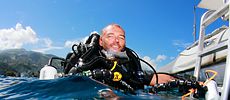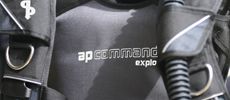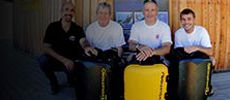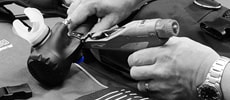Rebreather Resource Centre
Manuals, brochures, updates & useful links
Our resource centre below is constantly updated with the latest information, PDFs, instruction manuals and links to useful rebreather community resources.
© Cyrille Mulard
REBREATHER BLOG
- New Research on Sorb Storage by a team led by Dr Neal Pollock and Prof. Simon Mitchell, released Autumn 2018.
The research findings will be presented by Prof. Mitchell at EUROTEK, Birmingham, UK in December 2018.
https://xray-mag.com/content/sorb-storage-new-research-released
Key Take-away Message:
"The researchers believe the results have shown that sealing sorb is a good approach for prolonged storage. Rebreather divers should therefore consider placing partially used soda lime scrubber canisters in vacuum-sealed plastic bags if storing them for longer periods than overnight."
- A Calculator to Estimate the Risk of Pulmonary Oxygen Toxicity after Repeated Dives with Oxygen Partial Pressure of 1.3 bar - is now available on the RESA site. Posted Autumn 2018.
Produced by Barbara Shykoff. Barbara Shykoff earned her B.A.SC. (Engineering Science, Chemical option) from University of Toronto, her M.Sc.E (Bioengineering Institute) from the University of New Brunswick, and her Ph.D. (Biomedical Engineering Unit) from McGill University. For the last 16 years she has worked at the U.S. Navy Experimental Diving Unit. Her principal areas of investigation have been pulmonary oxygen toxicity, some other aspects of prolonged mildly-hyperoxic exposure, and physiological effects of breathing resistance with and without inspired CO2.
https://www.rebreather.org/blog/pulmonary-o2-tox-calculator/
- Rebreather Cell Warning Advice by Mike Fowler, Silent Diving, USA. Posted July 2016
At some point in your CCR diving career you are likely to encounter a cell warning. Besides pressing the right button to make it go quiet, do you really know what to look for or do about it? Read the blog here.
- Suppressible and Non-suppressible Warnings and what you should be doing about them... by Martin Parker, MD of AP Diving. Posted April 2018. Read the blog here.
USEFUL INFO
IMPORTANT Manufacturer Warning – Current limited Oxygen cells
VISION HUD Signal Quiz by Peter Harris
Rebreather Quiz by Fred Buckingham
Oxygen Dangerpoints by Lynda Weller
A Learner’s Guide to Closed Circuit Rebreather Operations (external link)
What is a Rebreather? (external link)
Guide de d’Apprentissage aux Opérations du Recycleur à Circuit Fermé
A P Diving Rebreathers Vindicated
ISO 9001:2015 & CE0598 Mod D Certificates
EU Certificates of Conformity - Products
Rebreather Battery Pack Test Report & Airline "deemed safe for" Transportation Statement - March 2024
BSAC Conference 2016
Thoughtful Management of Decompression Stress
An excellent presentation by Dr Neal Pollock at the 2016 British Sub Aqua Club Dive Conference.
SPECS, DATA SHEETS
& SCHEMATICS
Inspiration (Classic and Vision) schematic
Inspiration / Inspiration XPD work of breathing graph
Evolution / Inspiration EVO work of breathing graph
Buddy Nexus computer flow chart
Sofnolime Data Sheet V18 (info provided by Molecular Products)
Sofnolime Transportation Documentation (info provided by Molecular Products)
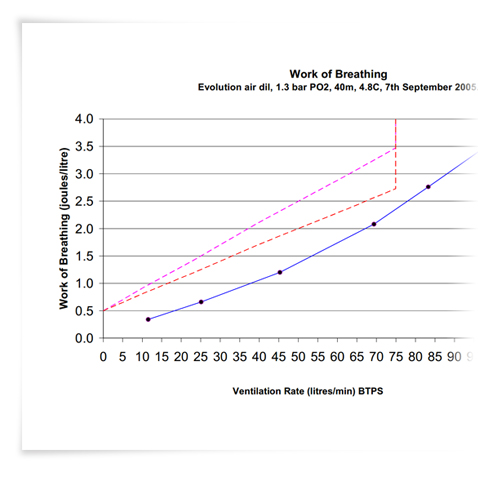
RESA RESOURCES
AP Diving is a founder member of RESA, The Rebreather Education and Safety Association and fully endorses its aims: to strive towards continuous improvement in safety and education in the rebreather industry.
RESA aims to set a higher degree of cooperation among CCR manufacturers and address manufacturing standards but above all the priority is to promote a Culture of Safety in the CCR community as a whole. To this end, we’re sharing a bank of useful documents, some general but most specific to AP Diving rebreathers.
Of these, the crucially important documents are the AP Diving rebreather manuals (there’s a specific one for each model, which you can download at the top of the page). These contains a wealth of information, Q&As, training self-checks, dive checklists, cautionary information, buddy advice, problem solving and much more. We cannot stress strongly enough the need to study, learn, read and reread your manual before, during and after your training as part of your ongoing post-course learning curve and self-discipline as a CCR diver.
We’ll be promoting any RESA initiatives and relevant materials produced by the industry and others on this site as and when they become available. We also recommend all new and prospective CCR divers take a look at the excellent RoSPA (Royal Society for the Prevention of Accidents) CCR Aware video which was launched at the Rebreather Forum3 (RF3) Conference in Florida in May 2012.
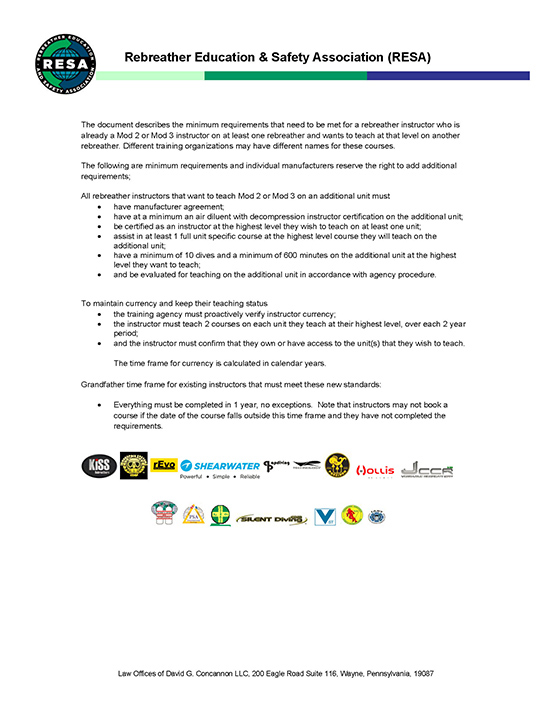
Useful links and downloads
RoSPA (Royal Society for the Prevention of Accidents) CCR Aware Video (external link)
What to do in the event of an accident? - A step-by-step guide.
RESA Standards – Current Revison – (PDF Download)
A Calculator to Estimate the Risk of Pulmonary Oxygen Toxicity after Repeated Dives with Oxygen Partial Pressure of 1.3 bar - is now available on the RESA site. Posted Autumn 2018.
Produced by Barbara Shykoff. Barbara Shykoff earned her B.A.SC. (Engineering Science, Chemical option) from University of Toronto, her M.Sc.E (Bioengineering Institute) from the University of New Brunswick, and her Ph.D. (Biomedical Engineering Unit) from McGill University. For the last 16 years she has worked at the U.S. Navy Experimental Diving Unit. Her principal areas of investigation have been pulmonary oxygen toxicity, some other aspects of prolonged mildly-hyperoxic exposure, and physiological effects of breathing resistance with and without inspired CO2.
https://www.rebreather.org/blog/pulmonary-o2-tox-calculator/

